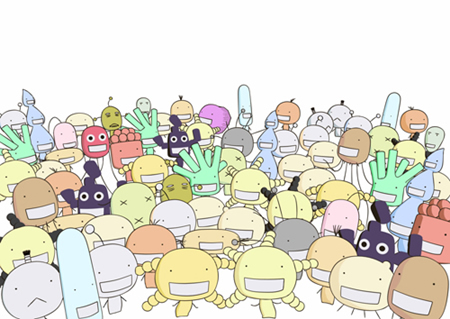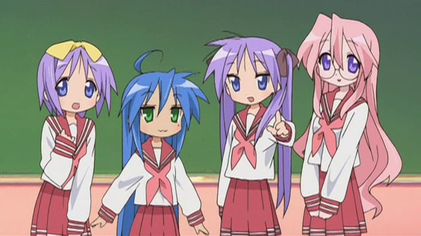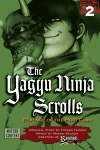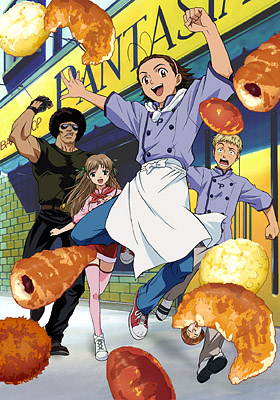
Well, by doing a review of this seminal shonen comedy I’m reneging on my vow to cease and desist from Harem Comedy, but I was killing time in a bookstore, and decided to take a look at the manga version of one of my favorite anime series…and of course, I got hooked. HC haters, avert your eyes…..
-----------
Clumsy and dorky Keitaro has had one dream his whole life – to fulfill a promise to his one childhood sweetheart and get into the prestigious
Tokyo University. In order to get the peace and quiet he needs for studying, he moves in with his
onsen-owning grandmother – only to find out that the once-quiet Hinata House is now an all-girls dormitory that he owns the deed to!
The 5 young women living at the dormitory – crafty boozehound Kitsune, samurai girl Mokoto, wild Su, shy Shinobu, and temperamental brainiac Naru – are hardly found of having a man live at their dorm, much less as their landlord. Even though his clumsiness gets him into constant trouble with the young women, eternal optimist Keitaro vows to stay on and get in to Tokyo U no matter what torment the girls might put him through.
As this is a whopping 14 volume series (how many beatings can one guy take?), so even the first 5 volumes is just skimming the surface. A little white lie by Keitaro leads the women believe that he’s actually a Tokyo U student (and not just a penniless
ronin), but his lie is soon revealed, much to their disgust. Fortunately, Naru tells Keitaro that she too is studying to get into Tokyo U, and is at the top of her class to boot. Despite her disgust with Keitaro, she begrudgingly begins to tutor him. When Keitaro mentions his motivation to get into Tokyo U, Naru explains she made a similar promise when she was younger – which gets Keitaro to wondering if Naru is actually his unnamed childhood crush. Unfortunately, Keitaro’s clumsiness continuity embarrasses the hot-tempered Naru, who doesn’t go easy in her beat-downs of luckless Keitaro.
After he flunks the entrance tests to Tokyo U, Keitaro leaves town to clear his head in
Kyoto – only to find out that Naru has flunked herself and has also gone on an impromptu vacation to Kyoto as well. They continue to butt heads in Kyoto until they meet fellow Tokyo U reject Mutsumi, a frail young woman who’s almost as klutzy and unlucky as Keitaro. Obviously attracted to Keitaro, Mutsumi joins on as their traveling companion, much to increasingly jealous Naru’s disgust. Meanwhile, Naru and Keitaro’s sudden departures alarm the other women at the house, who set off in search of the two: Su and Shinobu get their directions completely wrong, and end up in frigid
Hokkaido, while Kitsune soon drinks away all of her and Mokoto’s money, forcing them to perform sword-tricks on the streets of Kyoto.
Once all the characters are reunited, Mutsumi send Keitaro off with a passionate kiss that infuriates Naru. But when Keitaro is forced to find a part-time job with Seta - an eccentric but handsome Tokyo U professor - he soon finds out that Seta is none other than Naru’s old tutor…and her childhood crush. Seta’s sudden appearance throws Naru into confusion about her feelings towards Keitaro, who has his hands full babysitting Seta’s mischievous daughter Sarah. Meanwhile, shy and awkward Shinobu starts to get a crush on Keitaro, so in order to teach Shinobu correct kissing techniques, child genius Su creates a special “Kissing Robot” – which soon goes out of control. Sly Kitsune continues to come up with plans to get Naru and Keitaro together…and when they don’t work, she drunkenly attempts to seduce a clearly uncomfortable and unwilling Keitaro. And just when Naru and Keitaro have worked up the courage to confess their attraction to one other, Keitaro-loving Mutsumi shows up and announces that she’s now their next-door neighbor!
Whew! That’s the first 5 volumes (and ok, part of the vol 6) in a nutshell.
As much as I enjoy
Love Hina, I do have to say that it’s is not going to appeal to some people; although there’s no graphic sex or straight-up raunchy humor, there is a hell of a lot of panty-flashes, cleavage shots, and butts galore. Likewise, Keitaro’s clumsiness results in most of the Hinata House women – Naru in particular – getting exposed, accidentally felt up, or laying in suggestive positions. I’m aware that all of this is played for comedy and that Keitaro inevitable gets a beat-down when these incidents occur, but it does get awfully needless at times – and that has to be my biggest complaint about the series.
Still, aside from the
fanservice, I always get a huge kick of
Love Hina. Ken Akamatsu’s artwork is clean, crisp, and contemporary (you can tell that Wataru Wantanabe from
Densha Otoko: The Story of the Train Man Who Fell in Love With A Girl was clearly influenced by Akamatsu’s style), and he obviously has a knack for depicting the female form (see above), as well as a gift for depicting physical humor; you can tell he had a good time drawing the art.
Although a typical “harem comedy” in many respects,
Love Hina is unique in both the quality of its humor and Akamatsu’s genuine love for his characters. The women of Hinata House obviously hold the upper hand in the household and in their relationship with Keitaro, forcing the hapless Keitaro to labor hard in order to win even their grudging respect, although they come to like (and even love) him over time. This is not the usual plot of most harem comedies, in which the female characters are attracted to the male protagonist straight off the bat (see DearS, Girls Bravo, Shuffle!, etc), and it’s this singular quality of Love Hina that makes it such a special and likeable series. Notwithstanding the fact that their personalities are a little one-dimensional at times, the supporting cast of Su, Kitsune, Shinobu, Mokoto, and Mutsumi all get their “time in the sun” and become progressively multi-faceted and realistic. Likewise, Naru is hardly the stereotypical harem comedy “crush-object”, and is a strong and smart character who’s more that a match for her male suitors*.
I could get a little far-out and say that
Love Hina is less about the comedy and the relationships, and more in the vein of a classic coming of age-story - and that Keitaro is a classic example of the Japanese hero whose “stick-to-it-tiveness” saves the day….but I won’t. When all is said and done,
Love Hina is just a sweet and funny series filled with likeable characters that deals with the most basic of stories – boy meets girl.
* Does all of this counter the liberal fanservice? That’s up to you, the reader….

























